This article was co-authored by Deanne Pawlisch, CVT, MA. Deanne Pawlisch is a Certified Veterinary Technician, who does corporate training for veterinary practices and has taught at the NAVTA-approved Veterinary Assistant Program at the Harper College in Illinois and in 2011 was elected to the board of the Veterinary Emergency and Critical Care Foundation. Deanne has been a Board Member of the Veterinary Emergency and Critical Care Foundation in San Antonio, Texas since 2011. She holds a BS in Anthropology from Loyola University and an MA in Anthropology from Northern Illinois University.
There are 15 references cited in this article, which can be found at the bottom of the page.
This article has been viewed 27,813 times.
Taking your newborn puppies to their first veterinary appointment is extremely important. It helps establish a veterinary-client-patient relationship which is crucial to the future care and treatment of your dogs. It allows your veterinarian to get to know your puppies and prepares you to properly care for them in the early stages of life. To prepare for this first visit, you will want to make a budget and shop around for a good and affordable veterinarian in your area. You will also want to familiarize yourself with the checkup process, including vaccinations, stool samples, warning signs, and preventive measures.[1]
Steps
Getting Ready for the Vet
-
1Budget for veterinary care. You will need to set aside significant funds for the veterinary care of your newborn puppies. The costs of veterinary care has been increasing. Costs tend to be slightly more expensive in urban areas so you should phone a few veterinary clinics to find out the average costs associated with owning a puppy. Average costs for some typical veterinary services for each dog include:[2]
- Approximately $200-500 per year for flea and tick prevention.
- Approximately $60-150 per year for vaccinations.
- Annual physical exams cost $45-200 for the first year and $20-100 for subsequent years.
- Heartworm test and preventions cost between $0-35.
- Desexing (spaying and neutering) costs between $35-200.
-
2Get pet insurance. Pet insurance is worth considering for your new puppy. The costs of emergency medical treatment from an accident or a rare disease can be exorbitant. Similarly, dealing with poisoning or other unanticipated events can be prohibitive. To cope with these risks, you should look into the affordability and details of pet insurance policies.[3]
- Typically, you will have to pay for the costs upfront and then the insurance company will reimburse you. However, there are some plans that will pay the veterinarian up front.[4]
- The costs of pet insurance increase if you have particular breeds or for older dogs.[5] Read the terms of the policy carefully to determine what is covered.
- Most plans are focused on accidents and illnesses, although some also cover routine care such as annual exams.[6]
- Instead of pet insurance, you could start an emergency savings fund to deal with possible future accidents or emergencies.[7]
- Large breeds such as Great Danes and Rottweilers cost the most to insure. Small dogs like shih tzus and poodles are the least expensive to insure.[8]
Advertisement -
3Shop around for a veterinarian. Veterinarian costs are rising so you should shop around for a reputable, honest and affordable veterinarian.[9] Do a google search or look in your local phone book to find a few local veterinarians. Phone the veterinarians on your list and ask them about their area of expertise such as whether they focus on larger farm animals or on pets. Based on this information, choose a veterinarian that is suitable for you.
-
4Make an appointment and ask for estimates. Once you have chosen a veterinarian, give them a ring to make an appointment and ask for estimates. You might ask for the price of the following services that you will have to cover for your puppies:[10]
- Annual physical exam.
- Flea and tick prevention. Preventing fleas and ticks will save you a lot of money in the long run.
- Vaccinations. Ask if it is possible to personalize your pet’s vaccine costs. Some vaccines are required by law and some are optional and may be more or less effective for your dog. You might be able to save money on vaccinations.
- Heartworm test and preventions.
- Dental cleaning.
- Fecal exam.
- Neuter costs. Neutering your pet can save a lot of money in the long run. It can help you avoid health conditions like uterine, ovarian and testicular cancers.
-
5Follow the vet’s directions. Find out if you need to bring anything to the appointment such as medications, dietary information or a stool sample. Phone your veterinarian and find out if you need to bring anything.
- You may need to bring a stool sample. Many dogs have intestinal parasites when they are born. Your veterinarian will check for roundworms and potentially give you deworming medication at the check-up.[11]
-
6Write down your concerns before the visit. Write down your main concerns in a notebook and bring this list of concerns to your first appointment. If you are nervous about any behavior or symptoms, write these concerns down so that you can discuss them with your vet.
-
7Transport the puppies to the vet. You should leave yourself plenty of time to get to the appointment. Put your puppies in a sturdy open top box lined with newspapers or in a carrier and take them to the appointment.
- Try to pack everything you need the night before the appointment to reduce any anxiety.
- You will need a large enough box or dog carrier to transport the newborn puppies to the vet with their mother. Find a carrier that is comfortable for the puppies and is easy to carry in your car or on the bus.
- You could try spraying your dog carrier with a pheromone such as Adaptil, which will calm them down.[12]
- If you are driving to the vet’s office, you could try playing relaxing music in the car.[13]
Having a Good Vet Visit
-
1Check in at the vet’s office. You will need to give your name and your puppies’ information to the receptionist. In the waiting room, take a few deep breathes to reduce any stress or anxiety.[14]
- Keep your puppies away from any unruly animals.
-
2Get your puppies weighed. Your veterinarian should weigh your puppies. This will give them a baseline to see how fast they grow and gain weight in the first few months of their life.[15] You could ask your veterinarian:
- “How much do my puppies weigh?”
- “What is a healthy weight for my puppies?”
-
3Make sure they take their temperature. Puppies can maintain a temperature of about 12º Fahrenheit (-11 Celsius) warmer than air temperature. The temperature of puppies rises every week until they are four weeks of age and reach a normal adult body temperature. In the meantime, they need to stay close to their mother and other bodies to keep warm.[16] .
-
4Get your veterinarian to examine all body parts. Make sure the veterinarian does a complete examination of your new puppies. They will need to familiarize themselves with the features of your puppies so they can observe proper development over the years. In particular, make sure the examine the following:[17]
-
5Inquire about spaying and neutering. Neutering your puppies can save money down the line. You should find out what your veterinarian recommends in terms of neutering or spaying your puppy.[21]
-
6Protect your puppies from fleas and ticks. You can start preventive flea and tick prevention on puppies beginning at eight weeks of age. It is important to do preventive care because fleas and ticks carry disease.[25]
-
7Obtain directions for any medical treatments. If your veterinarian asks you to administer any medications to your puppies, you should ask for specific directions. You may have to put the medication in their food or directly in their mouth. Make sure you get the proper instructions.[26]
- Find out about worm medications. Your veterinarian may ask for a stool sample to determine possible worms. Many new puppies have worms. However, it is easy to treat roundworms with a medication that can be given at home or at the veterinarian’s office.[27]
-
8Schedule a follow-up visit for vaccinations. Your veterinarian will begin vaccinations at around eight weeks of age. You should find out when you need to come back for vaccinations. You should also find out if it is possible to personalize the vaccination to suit your dog. Some of the vaccinations will be mandatory and some will be recommended. In addition to mandatory rabies vaccinations, you may be offered vaccinations to guard against the following:
- Hepatitis.
- Parvovirus.
- Canine Distemper.
- Leptospirosis.
- Ask about personalizing vaccines to save money.[28]
-
9Talk to your vet about training. You should ask your vet for recommendations on dog training. If you have specific behavioral concerns, you should ask your veterinarian for advice on how to address your specific concerns.
- Search for classes based on the age and skill level of your dog.[29]
Monitoring Your Puppies’ Health at Home
-
1Watch for vomiting and diarrhea. Although vomiting and diarrhea are not necessarily cause for concern, you should take immediate action if they happen together or chronically.[30]
- If a puppy starts vomiting and gets diarrhea at the same time, call your veterinarian.
-
2Notice any loss of appetite. Puppies typically love eating. If your puppies are not eating, then they may be ill. You should take them to the veterinarian.[31]
- If you notice a puppy has not eaten for days, take them to the vet.
-
3Look for oozing eyes. Newborn puppies’ eyes are closed, but pay attention to their eyes as they begin to open. If their eyes are oozing or have a strange discharge, they may have been injured. You should definitely see the veterinarian to get treatment.[32] Observe the quality of the discharge:[33]
- If the discharge is clear, it may be a symptom of allergies.
- If the discharge is watery, it may be caused by an eyelash or other foreign body.
- If the discharge is yellowish, green or purulent, your dog may have a bad infection.
-
4Pay attention to urination and stool. If one of your puppies is urinating often but only dribbles a small amount each time, they may have a urinary tract infection. Take them to the veterinarian to get diagnosed and treated.[34]
- It may be a sign of a urinary tract infection or something more serious like bladder stones.[35]
-
5Look for signs of irritability and pain. If a new puppy is always in a bad mood, it is a sign they may be experiencing some kind of pain. Take them to the veterinarian for a diagnosis and treatment.[36]
- Take note of constant crying. If one of your newborn puppies is crying a lot, they may be in pain. You should listen to them and see a veterinarian.[37]
-
6Notice poor weight gain. If a puppy is not gaining weight, there may be something wrong and you should see your veterinarian.[38]
-
7Check their nose. If the puppies have nasal discharge or breathe in a strange manner, it could be a symptom of a serious issue. Wheezing or difficulty breathing could be a sign of aspiration pneumonia or other illnesses. You should take them to see your veterinarian.[41]
- If their nose is discharging something yellow, green or smelly, you should see your doctor. It could be a sign of an infection, allergy or other illness.[42]
Warnings
- Your puppies may exhibit some nervous behavior. Try to calm them down in anticipation of their first check-up.⧼thumbs_response⧽
- Dogs get a variety of illnesses from cigarette smoke such as asthma, bronchitis, lymphoma, oral, lung, and nasal cancers. If you quit smoking, you will be able to save a lot of money on your puppy in the long run.[43]⧼thumbs_response⧽
References
- ↑ http://www.akc.org/content/dog-care/articles/puppys-first-vet-expect/
- ↑ https://www.petfinder.com/pet-adoption/dog-adoption/annual-dog-care-costs/
- ↑ http://www.consumerreports.org/pet-products/is-pet-insurance-worth-cost/
- ↑ http://www.consumerreports.org/pet-products/is-pet-insurance-worth-cost/
- ↑ http://www.consumerreports.org/pet-products/is-pet-insurance-worth-cost/
- ↑ http://www.consumerreports.org/pet-products/is-pet-insurance-worth-cost/
- ↑ http://www.consumerreports.org/pet-products/is-pet-insurance-worth-cost/
- ↑ https://www.bloomberg.com/news/articles/2015-02-17/the-rising-costs-of-health-care-for-cats-and-dogs
- ↑ https://www.bloomberg.com/news/articles/2015-02-17/the-rising-costs-of-health-care-for-cats-and-dogs
- ↑ http://www.aspca.org/pet-care/general-pet-care/cutting-pet-care-costs
- ↑ https://www.petcarerx.com/article/your-puppys-first-vet-visit/1694
- ↑ http://www.preventivevet.com/dogs/removing-the-fear-and-anxiety-from-your-dogs-vet-visits
- ↑ http://www.preventivevet.com/dogs/removing-the-fear-and-anxiety-from-your-dogs-vet-visits
- ↑ http://www.preventivevet.com/dogs/removing-the-fear-and-anxiety-from-your-dogs-vet-visits
- ↑ http://www.akc.org/content/dog-care/articles/puppys-first-vet-expect/
- ↑ http://www.peteducation.com/article.cfm?c=2+2108&aid=916
- ↑ http://www.akc.org/content/dog-care/articles/puppys-first-vet-expect/
- ↑ http://www.akc.org/content/dog-care/articles/puppys-first-vet-expect/
- ↑ http://www.akc.org/content/dog-care/articles/puppys-first-vet-expect/
- ↑ http://www.akc.org/content/dog-care/articles/puppys-first-vet-expect/
- ↑ http://www.akc.org/content/dog-care/articles/puppys-first-vet-expect/
- ↑ http://www.aspca.org/pet-care/general-pet-care/spayneuter-your-pet
- ↑ http://www.aspca.org/pet-care/general-pet-care/spayneuter-your-pet
- ↑ http://www.aspca.org/pet-care/general-pet-care/spayneuter-your-pet
- ↑ https://www.petcarerx.com/article/your-puppys-first-vet-visit/1694
- ↑ http://www.akc.org/content/dog-care/articles/puppys-first-vet-expect/
- ↑ http://www.akc.org/content/dog-care/articles/puppys-first-vet-expect/
- ↑ http://www.aspca.org/pet-care/general-pet-care/cutting-pet-care-costs
- ↑ http://www.petsmart.com/pet-services/training/
- ↑ http://www.akc.org/content/dog-care/articles/puppys-first-vet-expect/
- ↑ http://www.akc.org/content/dog-care/articles/puppys-first-vet-expect/
- ↑ http://www.akc.org/content/dog-care/articles/puppys-first-vet-expect/
- ↑ http://pets.webmd.com/dogs/dog-discharge-from-eye
- ↑ http://www.akc.org/content/dog-care/articles/puppys-first-vet-expect/
- ↑ http://pets.webmd.com/dogs/guide/lower-urinary-tract-problems-infections-dogs
- ↑ http://www.akc.org/content/dog-care/articles/puppys-first-vet-expect/
- ↑ http://pets.webmd.com/dogs/guide/caring-newborn-puppy?page=2
- ↑ http://pets.webmd.com/dogs/guide/caring-newborn-puppy?page=2
- ↑ http://www.petmd.com/dog/conditions/digestive/c_multi_Weight_Loss_and_Cachexia
- ↑ http://www.petmd.com/dog/conditions/digestive/c_multi_Weight_Loss_and_Cachexia
- ↑ http://pets.webmd.com/dogs/guide/caring-newborn-puppy?page=2
- ↑ http://pets.webmd.com/dogs/my-dog-has-discharge-from-nose
- ↑ http://www.aspca.org/pet-care/general-pet-care/cutting-pet-care-costs
About This Article
To take your newborn puppies to the vet for their first checkup, start by lining a dog carrier or sturdy box with towels or newspaper to make it warm and comfortable for the puppies. Staying calm and relaxed to avoid transferring anxiety to your puppies, gently place them and the mother dog into the carrier or box. Once you’re in the vet’s office, keep the puppies away from loud animals or people so they don’t get frightened. For example, it can help to find a quiet corner and cover the carrier with a towel to darken the inside and muffle some of the noise. While the vet is examining each puppy and the mother dog, make sure the other puppies are safe inside the carrier so they don’t accidentally fall out. For more advice from our Veterinary Technician co-author, including what questions to ask your vet, keep reading!
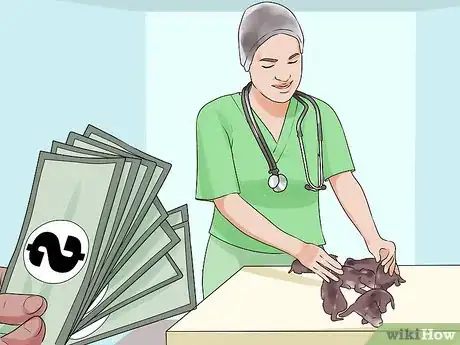
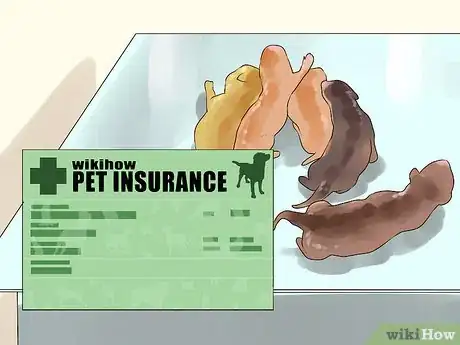
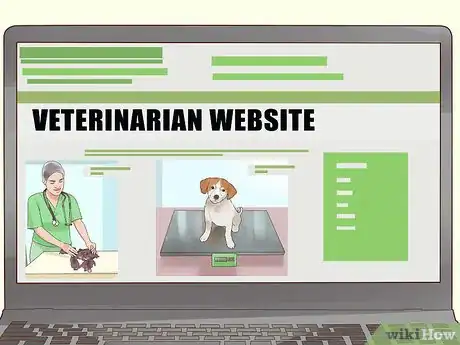



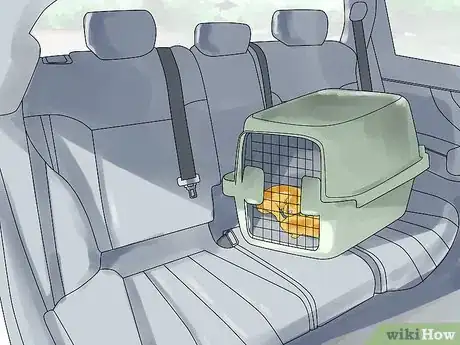
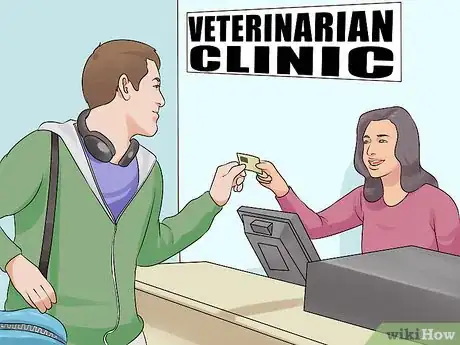
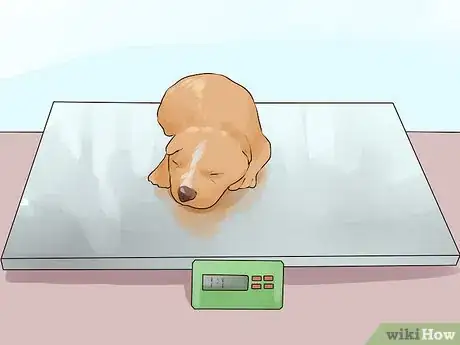
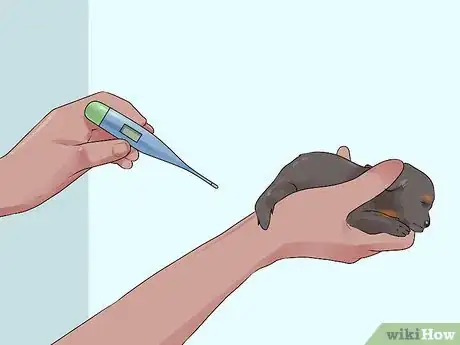
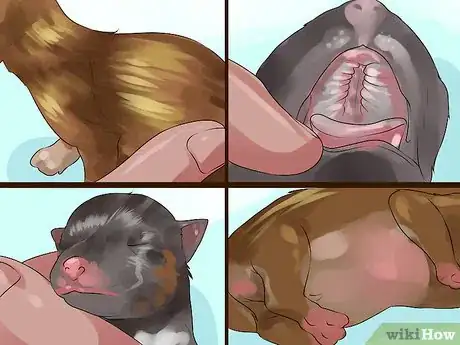
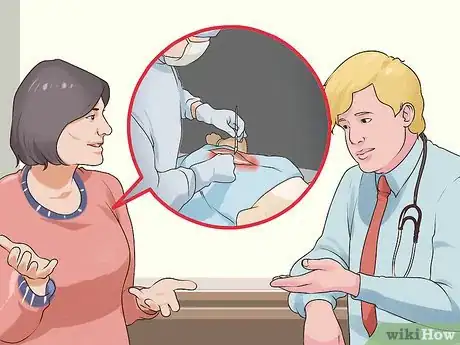
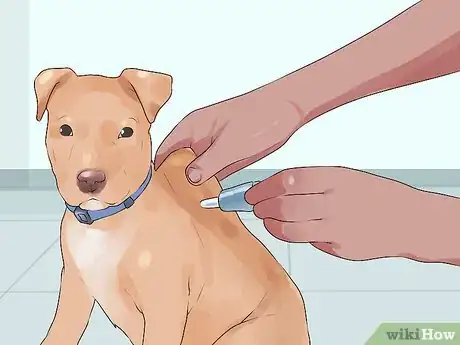
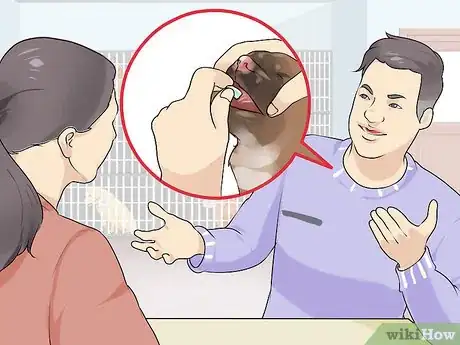
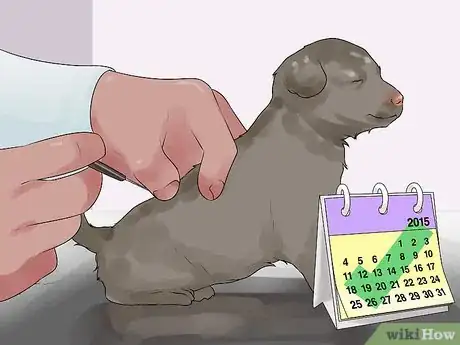
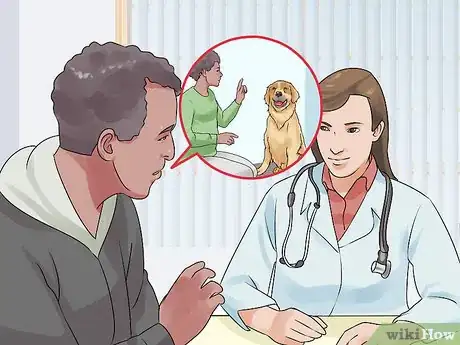

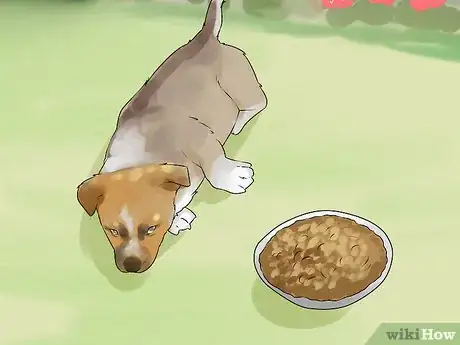
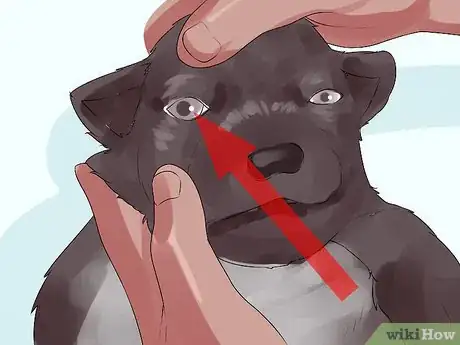
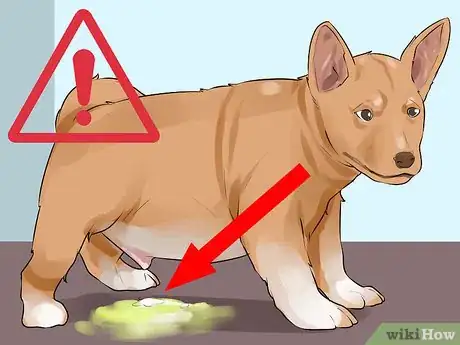
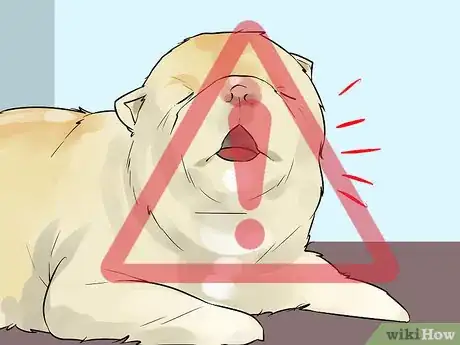



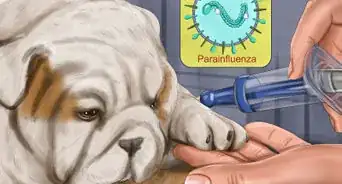
-Step-7.webp)
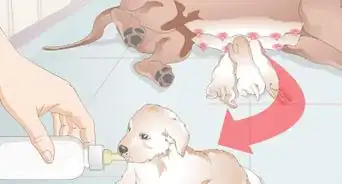


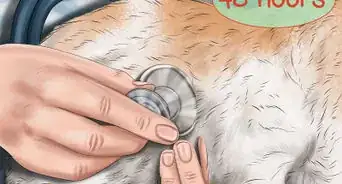










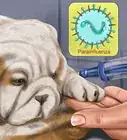
-Step-7.webp)


































